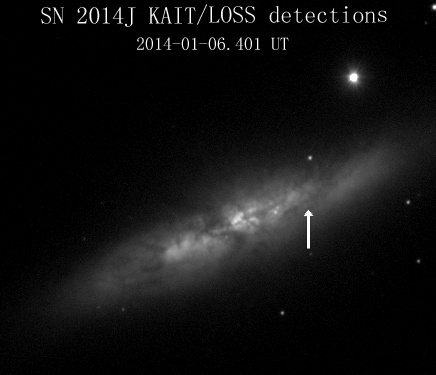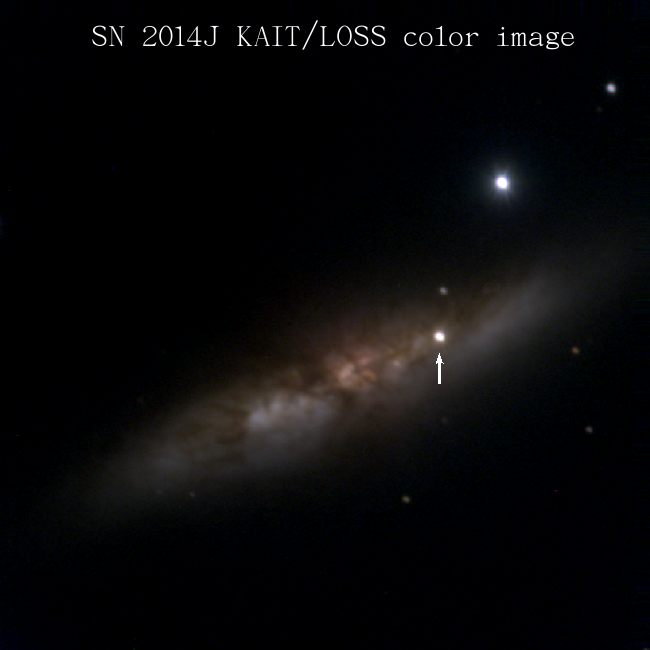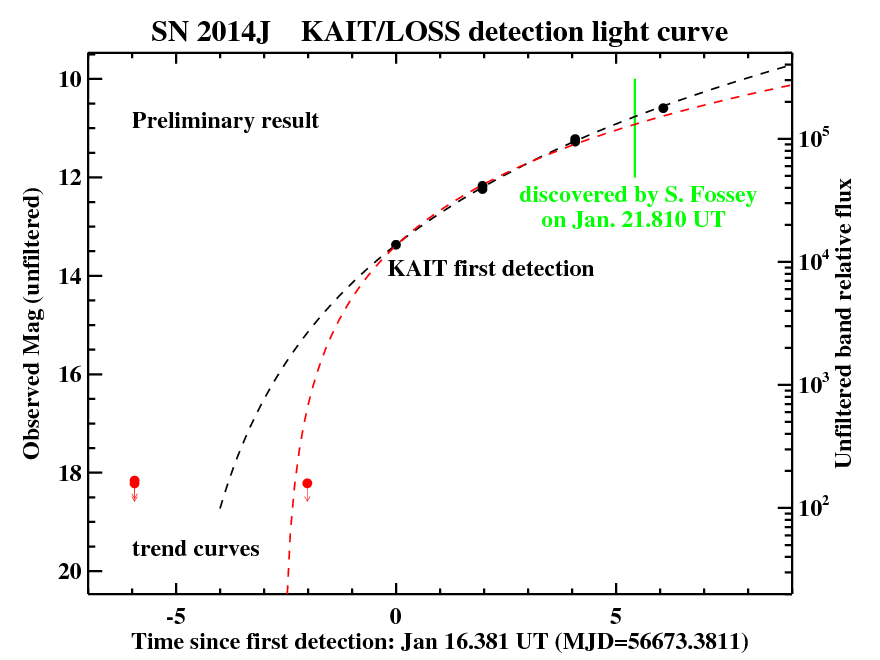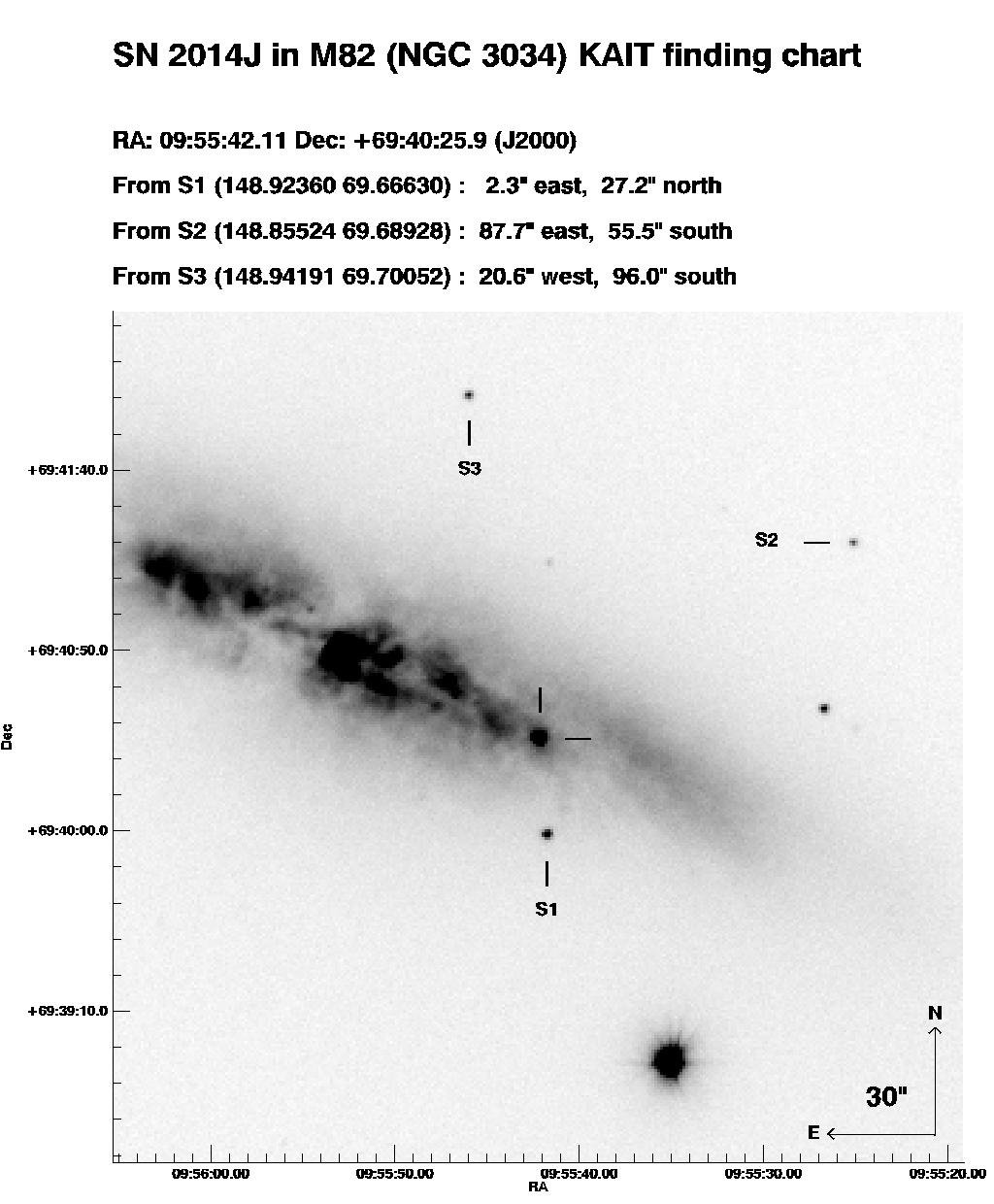



KAIT pre-discovery detection of SN 2014J in M82
Press release in 2014 on SN 2014J




|
Above we show several KAIT prediscovery detections of SN 2014J in
M82, along with a preliminary early-time light curve and a color
composite image. M82 and thousands of other galaxies have been
repeatedly imaged as part of the Lick Observatory Supernova Search
(LOSS) with the 0.76 m Katzman Automatic Imaging Telescope (KAIT) at
Lick Observatory. This project is conducted by Professor Alex Filippenko
(overall Principal Investigator) and Dr. WeiKang Zheng, at UC Berkeley.
Over the years, LOSS has discovered about 1000 supernovae. Indeed, during the decade 1998-2008, it was the world's most successful search engine for relatively nearby supernovae. Recently, some other robotic searches covering larger areas of the sky have been finding a greater number of supernovae, so the new goal of LOSS is to discover younger supernovae, very shortly after they explode, and to automatically begin observations through multiple filters. We find young supernovae by imaging fewer galaxies more frequently, typically with a cadence of 2 days instead of 1 week. Excellent examples of our success are SN 2012cg (Silverman et al. 2012, Astrophysical Journal Letters, Volume 756, Issue 1, Article ID L7) and SN 2013dy (Zheng et al. 2013, Astrophysical Journal Letters, Volume 778, Issue 1, Article ID L15). Indeed, utilizing our data and a prediscovery detection by the Italian Supernova Search Project, we were able to constrain the first-light time of SN 2013dy to be only 2.4 +/- 1.2 hours before the first detection, making SN 2013dy the earliest known detection of a Type Ia supernova. So, given our prediscovery detections of SN 2014J, why didn't KAIT/LOSS actually discover SN 2014J? The problem is that there are few bright stars in the field of M82, so the software that automatically aligns new images with template images frequently fails on M82; observing conditions are sometimes insufficient to allow detection of the faint field stars. The images that fail automatic processing are flagged, and volunteers (undergraduate students) visually examine them the next day to search for supernova candidates. However, M82 is a complex-looking galaxy, and the student checkers unfortunately didn't notice the new object in the prediscovery images. We have asked them to check more carefully in the future, and we are also making improvements to our automatic processing software. We hope to not miss such opportunities again! |